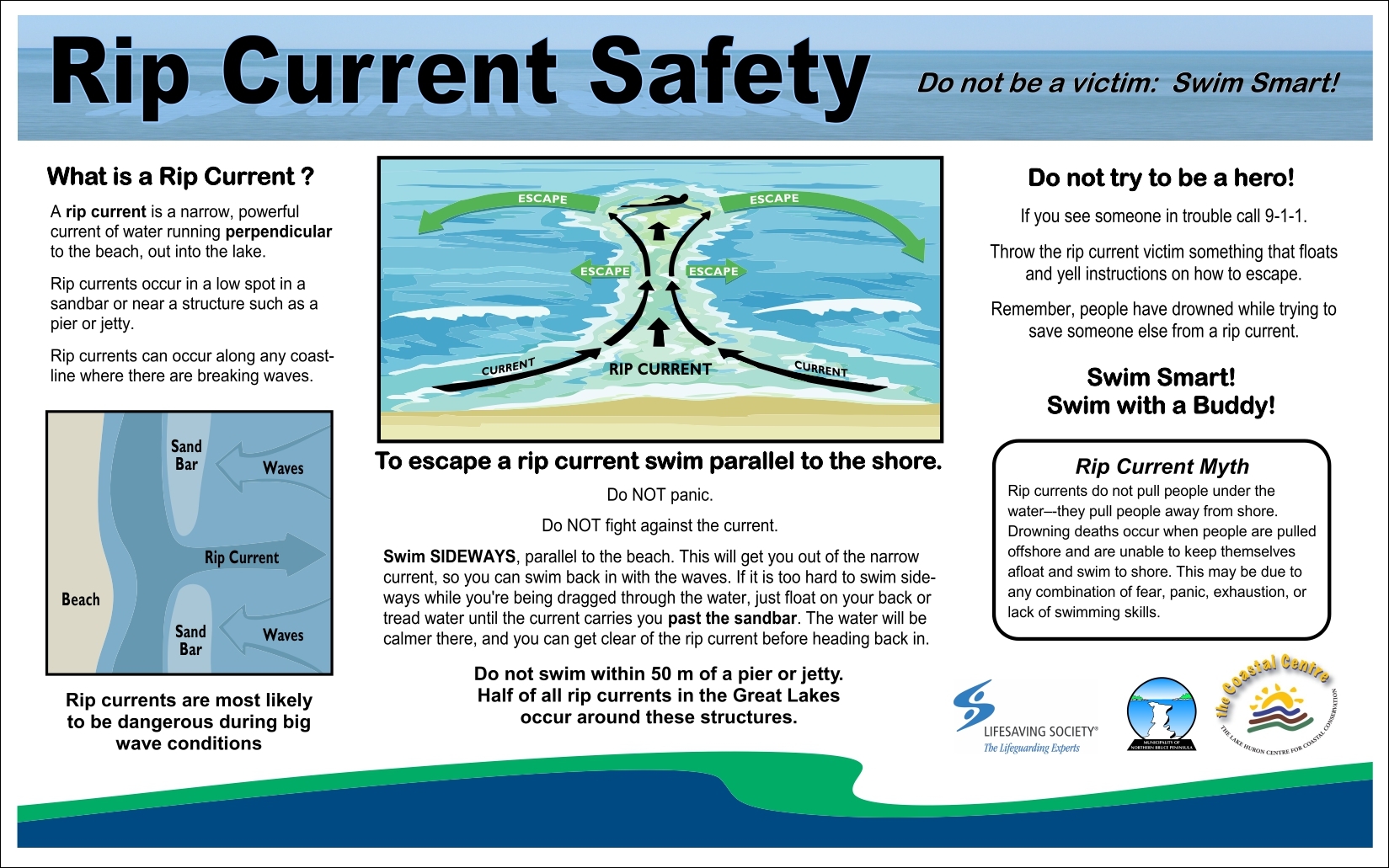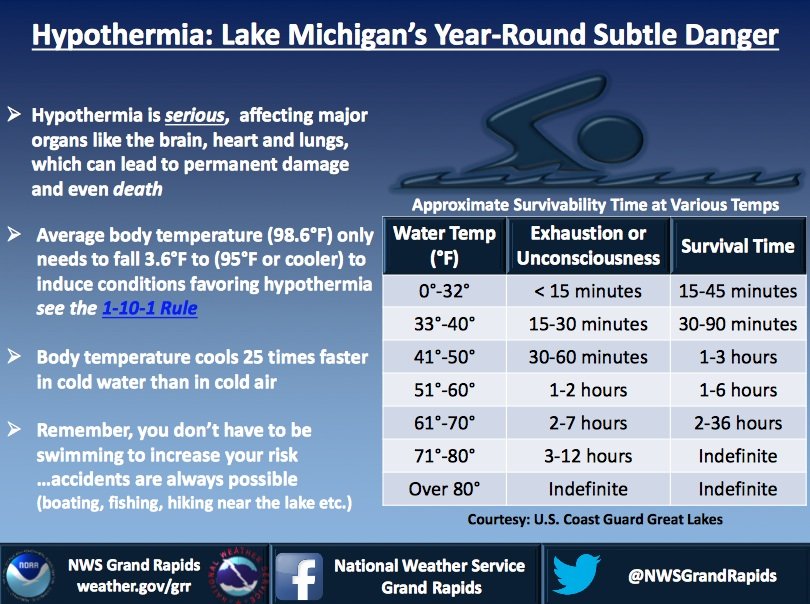Rip Currents
Rip currents are approximately shore normal seaward directed flows. They typically reach speeds up to 1 m/s, and have been reported as high as 2 m/s in mega-rips such as at Palm Beach, Australia [Short, 1985]. Rip currents are the most visible feature of nearshore circulation systems, often identified by sediments being carried offshore. Rip currents generally form when waves approach normal to the shoreline or at a slight angle. However, if the angle is too great, the tendency for rip currents to form diminishes. Rip currents return the water transported shoreward by waves and, under certain conditions of nearshore slope and wave activity, rip currents are the primary agent for the seaward transport of water and sediments. Rip currents are usually narrow (10-20 m in the alongshore direction) and generally span the entire water column, however, offshore of the surf zone they tend to be confined near the surface (Shepard et al.,1941). Interest in studying rip currents is motivated by their importance to nearshore processes such as offshore sediment transport, shoreline evolution, and pollutant transport.Public interest in rip currents is due to beach safety issues and beach erosion (Short, 1985).












